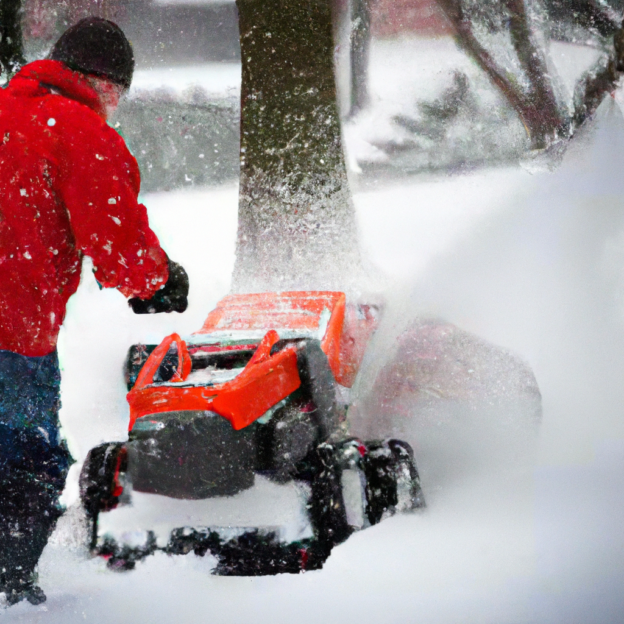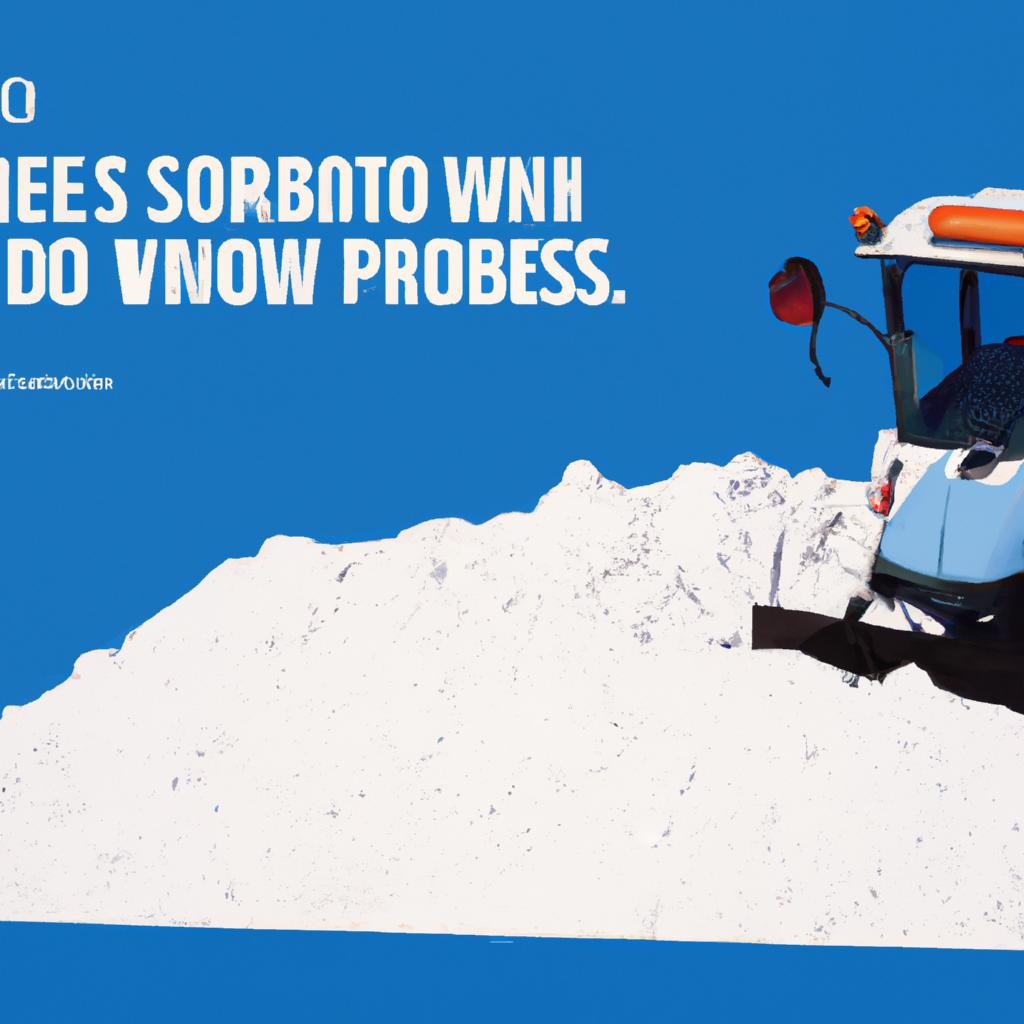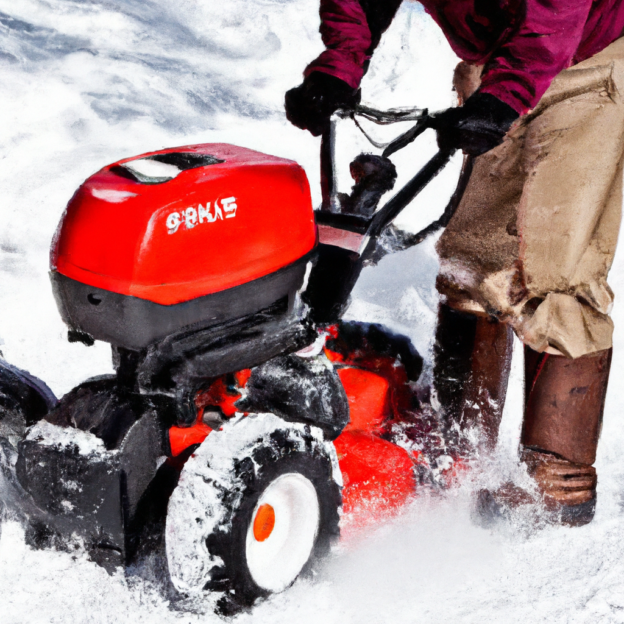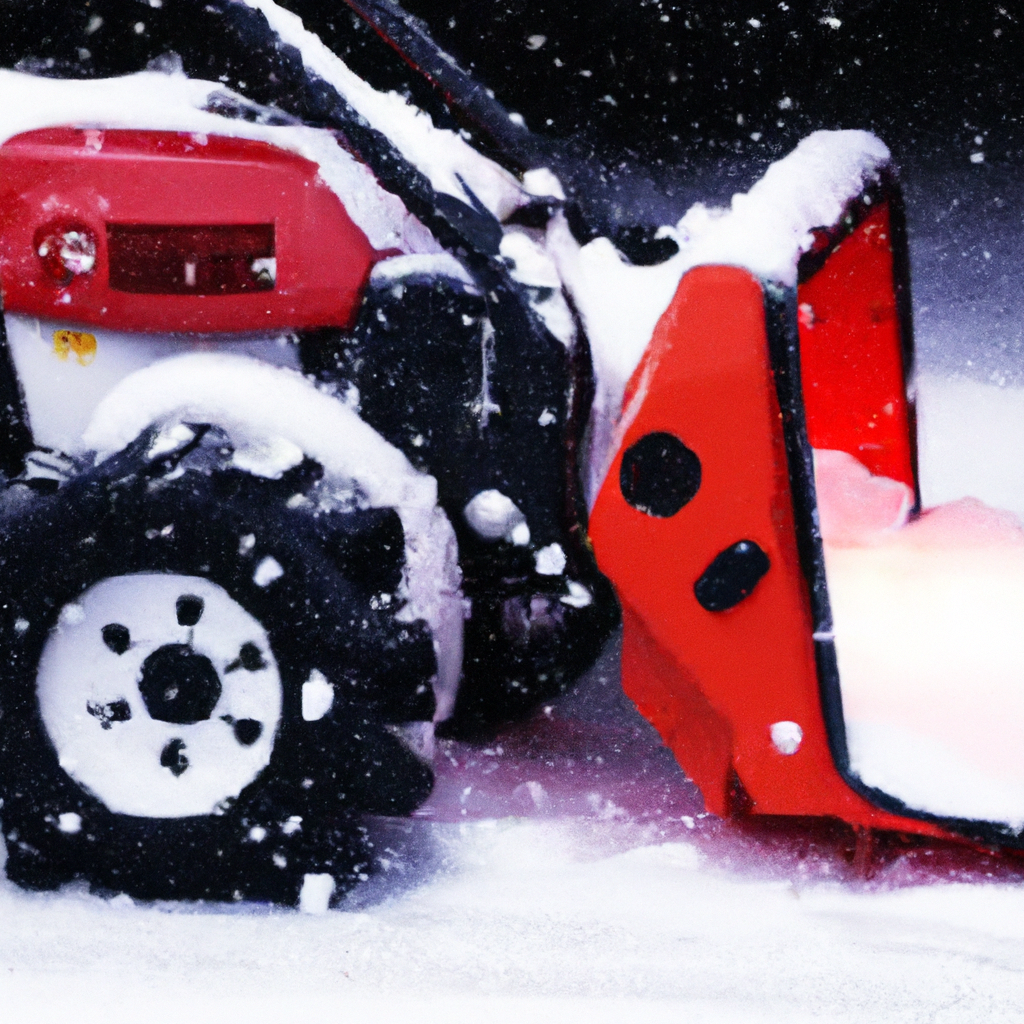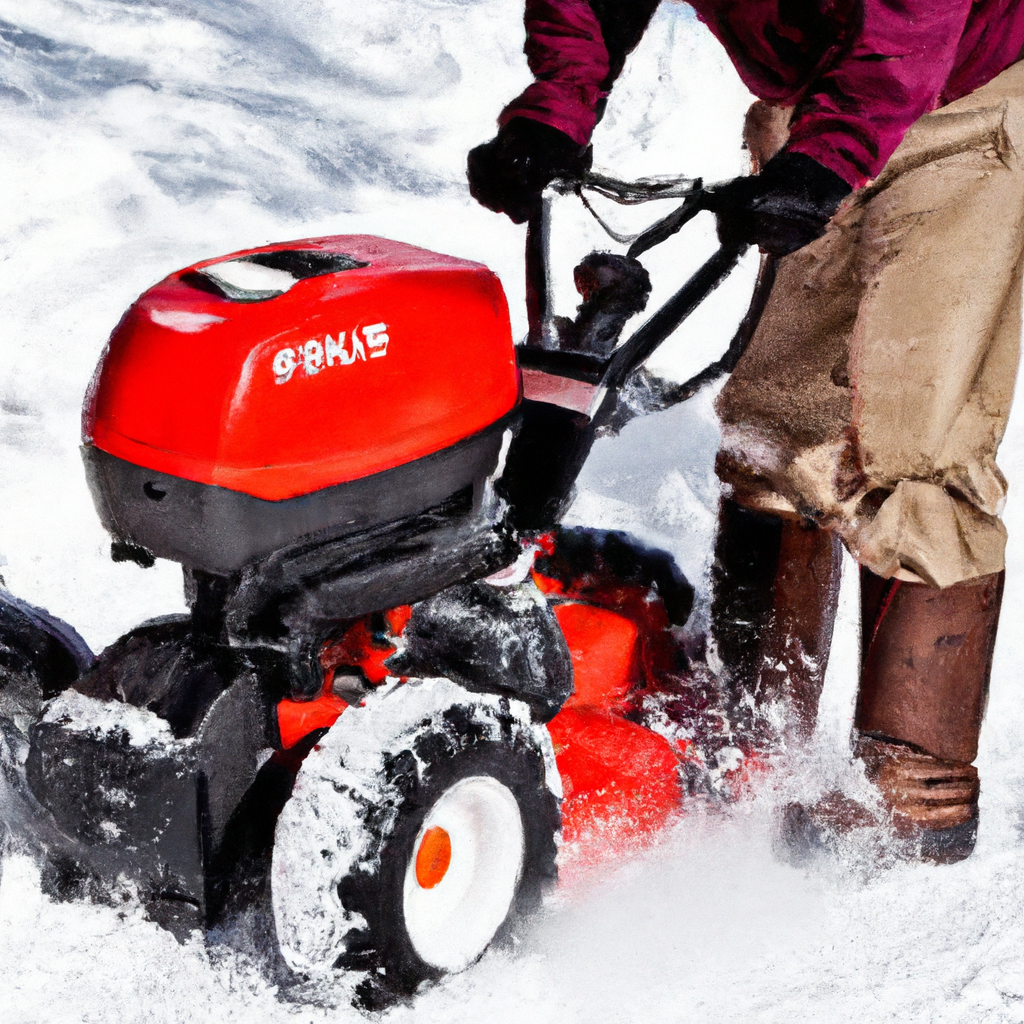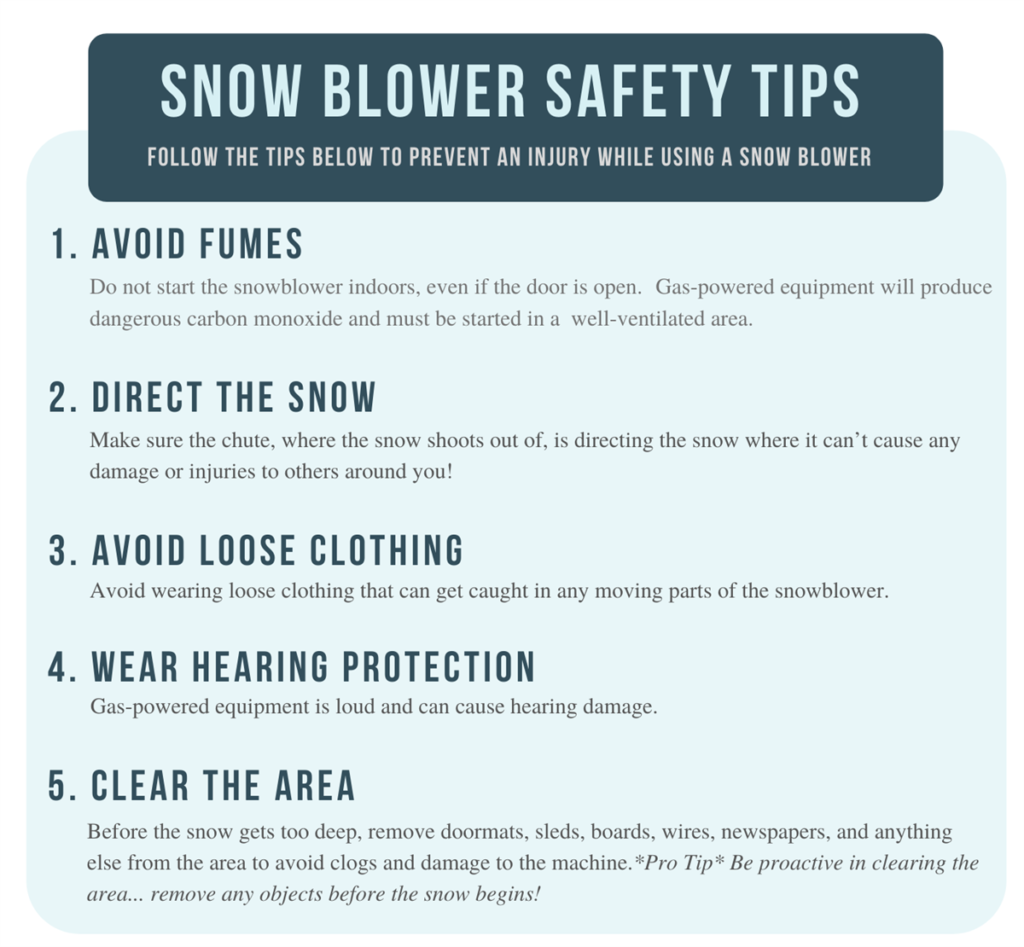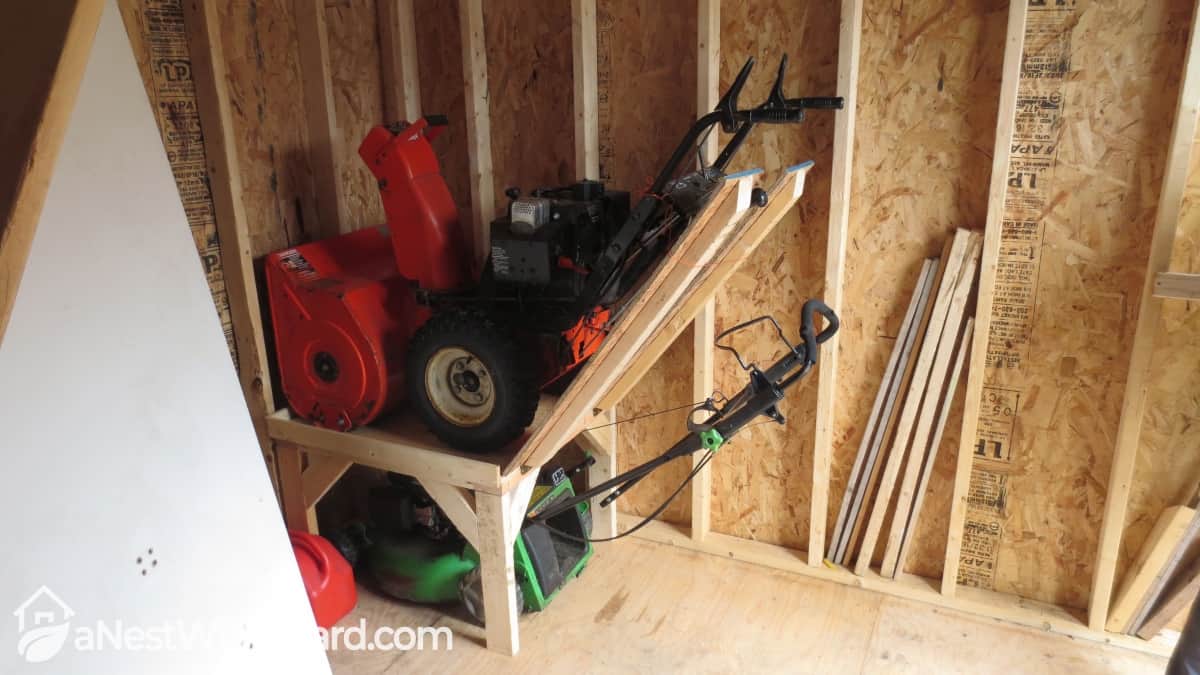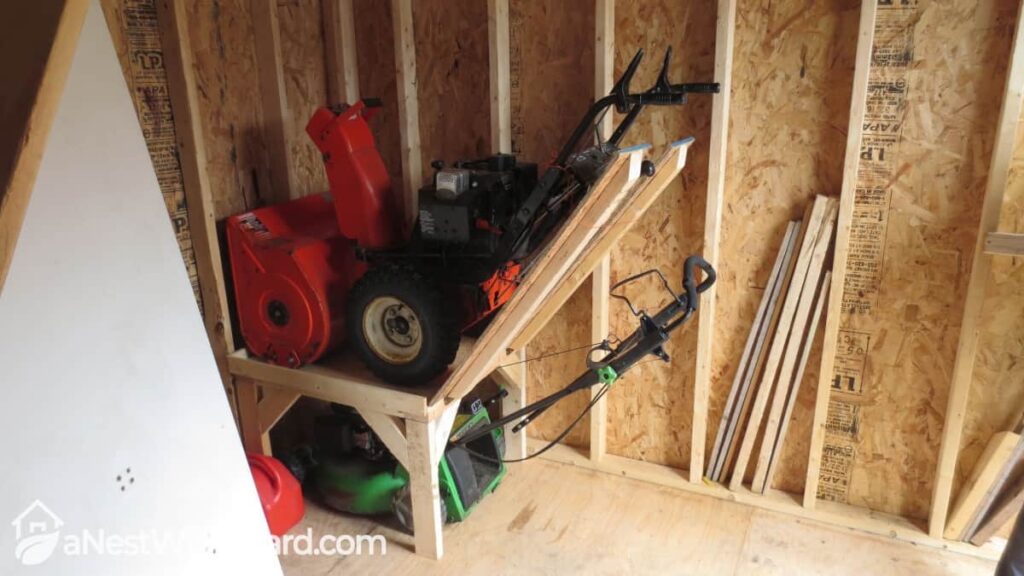With winter in full swing, it’s time to gear up for the snowy season and make snow removal as safe as possible. But what are the best practices for snowblower safety? When it comes to operating these powerful machines, a few simple precautions can make all the difference between a smooth snow clearing experience and a trip to the emergency room. From wearing protective gear to practicing proper usage techniques, this article will outline the essential steps you need to follow to ensure your safety and the safety of those around you while using a snowblower. So let’s get started and make this winter season accident-free.
Importance of Snowblower Safety
When it comes to operating a snowblower, safety should always be a top priority. Snowblowers are powerful machines that can pose serious risks if not handled correctly. From preventing accidents to protecting yourself from injuries, there are several key considerations to keep in mind. By understanding the risks involved, choosing the right snowblower, practicing proper operation techniques, and implementing safety measures, you can ensure a safe and enjoyable snow removal experience.
Understanding the Risks
Before you start operating a snowblower, it’s important to understand the potential risks involved. One of the main hazards is the rotating auger, which can cause severe injuries if it comes into contact with your body parts, clothing, or other objects. In addition, the discharge chute can expel snow or debris at high speeds, increasing the risk of injury to yourself or those around you. Snowblowers can also be prone to tip over, especially on uneven terrain or slopes, which can lead to accidents or rollovers. By being aware of these risks, you can take the necessary precautions to prevent accidents.
Preventing Accidents
Preventing accidents is crucial when it comes to snowblower safety. One of the first steps you can take is choosing the right snowblower for your needs. Consider the size of the area you need to clear, the type of snow you typically encounter, and your physical capabilities. A snowblower that is too large or too small for your needs can increase the risk of accidents. It’s also essential to check for safety features such as an auger control system, a discharge chute deflector, and an emergency stop button. These features can help minimize the risks and improve overall safety.

Protecting Yourself from Injuries
While preventing accidents is important, it’s equally crucial to protect yourself from injuries when operating a snowblower. Dressing appropriately is key to staying safe. Wear warm, layered clothing, sturdy boots with good traction, and protective eyewear. It’s also advisable to wear hearing protection, as snowblowers can be loud. Before starting the machine, carefully review the user manual to familiarize yourself with its specific operation instructions and safety guidelines. Understanding how to properly operate the snowblower will greatly reduce the risk of injuries.
Choosing the Right Snowblower
Choosing the right snowblower is essential for both safety and efficiency. Before making a purchase, consider your needs and preferences. Evaluate the size and type of the area you need to clear, as well as the average snowfall in your region. There are various types of snowblowers available, such as single-stage, two-stage, and three-stage models, each designed for specific snow conditions and terrain. Select a snowblower that suits your needs and abilities, ensuring that it is not too heavy or difficult to maneuver.
Check the safety features on the snowblower you are considering. Look for features such as an auger control system that allows you to easily pause or stop the snowblower’s operation, a discharge chute deflector that lets you control the direction of the expelled snow, and an emergency stop button that provides a quick and easy way to shut off the machine in case of any emergencies. These safety features can greatly reduce the risk of accidents and injuries while operating the snowblower.
Additionally, be sure to review the user manual provided by the manufacturer. The manual will provide important details about the snowblower’s operation and maintenance, as well as specific safety guidelines. Familiarize yourself with all the instructions and warnings in the manual to ensure you operate the snowblower safely and effectively.
Preparation and Maintenance
Proper preparation and maintenance are essential for safe snowblower operation. Before starting the machine, it’s crucial to clear the area of any potential hazards. Remove any loose objects, such as rocks, branches, or toys, that could get caught in the snowblower or be propelled by the discharge chute. This will help prevent damage to the machine and reduce the risk of injuries to you and others.
In addition to clearing the area, it’s important to regularly inspect and maintain the snowblower. Check for any worn-out or damaged parts that may impair the machine’s performance or safety. Replace any faulty parts immediately, following the manufacturer’s guidelines. Regularly lubricate moving parts, such as the auger and chute, to ensure smooth operation. Keep the snowblower clean and free from debris build-up, as this can affect its performance and potentially cause accidents. Proper maintenance will maximize the safety and longevity of your snowblower.
When it comes to fuel safety, follow the manufacturer’s instructions on fuel type and storage. Use only the recommended fuel and avoid mixing gasoline with other substances. Never refuel the snowblower while it is running or still hot. Always refuel in a well-ventilated outdoor area, away from any potential sources of ignition. Proper fuel safety measures will minimize the risk of fire or explosions while operating the snowblower.
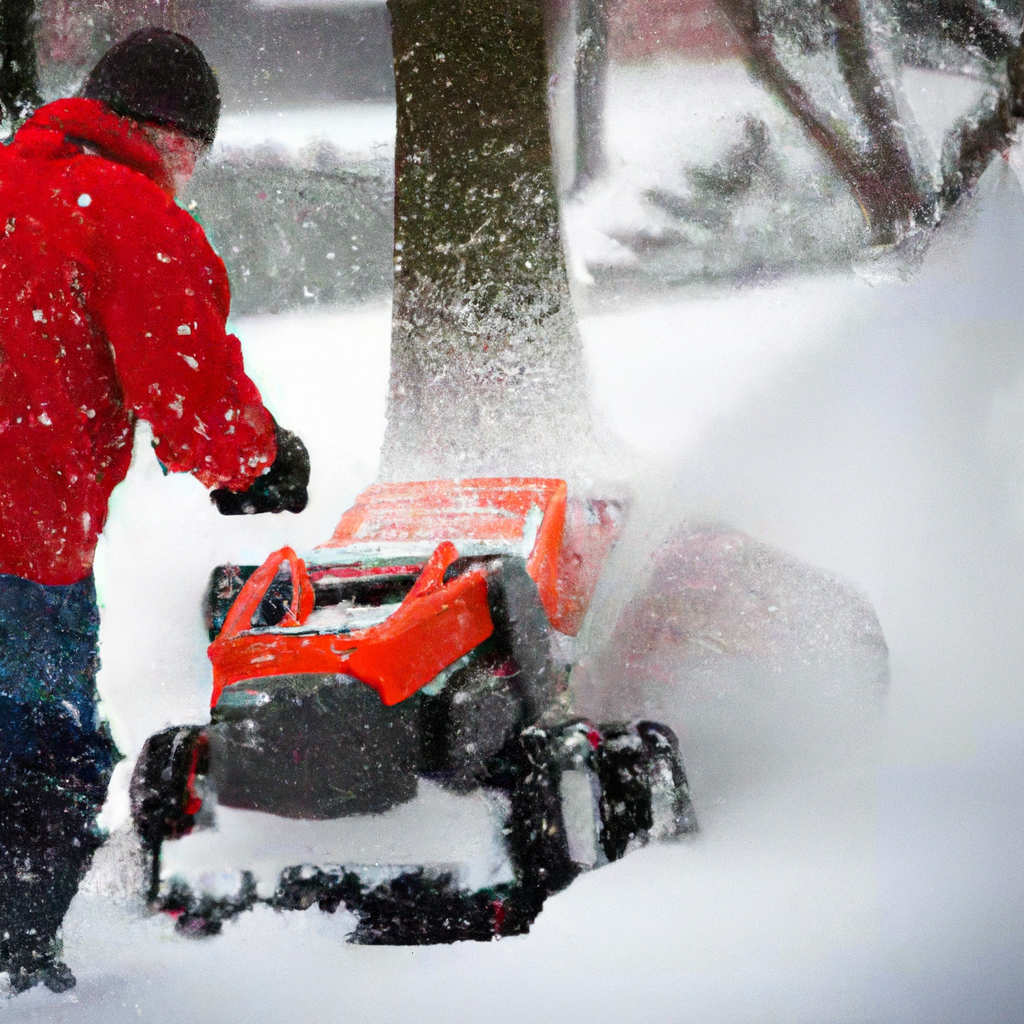
Proper Operation Techniques
Safe and proper operation techniques are crucial for both your safety and the efficient performance of the snowblower. Dressing appropriately is the first step in ensuring your safety. Wear warm, layered clothing, including a hat and gloves, to protect yourself from the cold. Sturdy boots with good traction will provide stable footing on slippery surfaces. Protective eyewear will shield your eyes from flying debris or snow.
Before starting the snowblower, review the user manual once again to refresh your memory on the proper starting procedures. Familiarize yourself with the location and functions of all the controls, such as the throttle, choke, and auger control system. Follow the step-by-step instructions for starting the machine, ensuring that you are in a safe and stable position.
When operating the snowblower, pay attention to the surface on which you are working. Different types of surfaces, such as concrete, gravel, or grass, may require different settings or adjustments on the machine. Make sure to adjust the height of the snowblower accordingly to prevent unnecessary damage to the surfaces or the machine itself. Always go at a steady pace and avoid sudden movements or jerking motions, as these can destabilize the snowblower and increase the risk of accidents.
Handling Snow and Debris
Properly handling snow and debris is critical to maintaining safety and efficiency while operating a snowblower. Positioning and posture are key factors to consider. Stand in a stable and balanced position, with your feet shoulder-width apart. Keep a firm grip on the snowblower handles at all times, maintaining control of the machine.
Avoiding obstructions is crucial to preventing accidents and damage to the snowblower. Be aware of your surroundings and keep an eye out for any potential obstructions in the snow, such as rocks or sticks. Avoid passing over these obstacles as they can damage the auger or get caught in the machine, potentially causing accidents. Clear any visible debris in the snow before using the snowblower to ensure a smooth and safe operation.
When dealing with heavy snow, it’s important to have effective strategies in place. Clearing heavy snow can put additional strain on the snowblower’s engine and auger. Take slow and steady passes, allowing the machine to effectively break up and remove the snow. If the snow is too deep or heavy, it may be necessary to make multiple passes or adjust the height settings on the snowblower. Clearing heavy snow requires patience and caution, ensuring both your safety and the proper functioning of the snowblower.
Best Practices for Clearing Clogs
Clearing clogs is an important aspect of snowblower safety. The auger can sometimes get clogged with snow, ice, or debris during operation. If this happens, it’s crucial to follow the appropriate procedures to clear the clog safely.
The first step is to shut off the engine and remove the ignition key. This ensures that the snowblower does not accidentally start while you are working on clearing the clog. Never attempt to clear a clog while the engine is running, as this can result in serious injuries.
Use digging tools, such as a broom handle or a snow shovel, to carefully dislodge the clog. Never use your hands, feet, or any other body parts to remove the clog, as the rotating auger can cause severe injuries. Be patient and gentle while clearing the clog, ensuring that you do not damage the machine or its parts.
Handling Emergencies
While operating a snowblower, it’s important to be prepared for emergencies. Two common emergency situations you may encounter are rollovers and machine malfunctions. Knowing how to respond to these emergencies can prevent further injuries and damage.
If the snowblower starts to tip over, do not panic. Immediately release the auger control and engine throttle, and shift your weight away from the tipping side. Do not attempt to stop the machine from tipping with your hands or feet, as this can result in serious injuries. Instead, guide the snowblower to a safe and stable position, ensuring that the engine is shut off. Take extra caution to prevent rollovers by avoiding steep slopes and uneven terrain whenever possible.
In the event of a machine malfunction, such as strange noises, smoke, or loss of power, it is important to respond appropriately. Immediately shut off the engine and remove the ignition key to prevent any further damage. Do not attempt to repair the machine yourself unless you are trained and qualified to do so. Contact a professional for assistance or take the snowblower to a reputable service center for repair.
Knowing the emergency stop procedures for your snowblower is crucial. Familiarize yourself with the location of the emergency stop button and other shut-off mechanisms. In case of any emergencies or situations where immediate shut-off is required, follow the manufacturer’s instructions to quickly and safely stop the machine.
Tips for Safe Storage
Properly storing your snowblower is essential for maintaining its performance and ensuring safety. Before storing the machine, clean it thoroughly to remove any snow, debris, or salt residue. Pay special attention to the auger and chute, as these areas tend to accumulate the most debris.
After cleaning, allow the snowblower to dry completely. Moisture can lead to rust and other damage, reducing the machine’s lifespan. Once dry, apply a thin layer of lubrication to the necessary moving parts to prevent corrosion during storage.
When it comes to fuel safety, always follow the manufacturer’s instructions for proper fuel disposal. Drain the fuel tank or add a fuel stabilizer to prevent fuel deterioration and potential ignition hazards. Dispose of the fuel in accordance with local regulations.
Store the snowblower in a secure and well-ventilated location, away from children and pets. If possible, cover the machine with a protective tarp or use a dedicated storage cover to protect it from dust and debris. Regularly inspect the stored snowblower for any signs of damage or wear and tear that may need to be addressed before the next use.
Safety Considerations for Children
When operating a snowblower, it’s important to take safety considerations for children into account. Children should never be allowed to operate a snowblower or be in close proximity to the machine during operation. The rotating auger and discharge chute can pose serious risks to their safety.
To keep children away from the snowblower, establish clear boundaries and create a safe zone where they are not allowed to enter while it is in operation. Communicate these boundaries and the importance of staying away from the machine. It’s also important to store the snowblower in a secure location, such as a locked shed or garage, to prevent unauthorized access.
Supervision and education play a vital role in children’s safety around snowblowers. If your children are of appropriate age and maturity, teach them about the potential dangers associated with snowblowers and explain the safety rules. Educating children about the risks and emphasizing the importance of staying away from the machine will help promote a safe environment.
Importance of Regular Inspections
Regular inspections are crucial to maintaining the safety and efficiency of your snowblower. Before each use, visually inspect the machine for any signs of wear and tear. Check for loose or damaged parts, such as belts, bolts, or fasteners, and replace them as needed. Pay attention to any leaks, unusual noises, or changes in performance that may indicate a problem.
Regularly clean and lubricate the snowblower as part of your maintenance routine. This helps prevent debris build-up and ensures smooth operation. Follow the manufacturer’s guidelines on maintenance procedures and schedules for your specific model.
In addition to regular inspections, it’s important to have your snowblower professionally serviced on a regular basis. A professional technician can perform a more thorough inspection, identify any potential issues, and make necessary repairs or adjustments. Regular servicing will not only enhance the safety of your snowblower but also prolong its lifespan.
By understanding the importance of snowblower safety, choosing the right machine, practicing proper operation techniques, and implementing safety measures, you can ensure a safe and efficient snow removal experience. Remember to always prioritize safety and follow the manufacturer’s guidelines and recommendations. Stay informed, stay vigilant, and stay safe while operating your snowblower.
